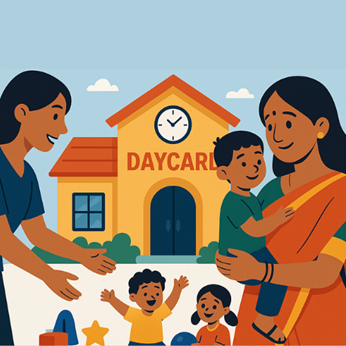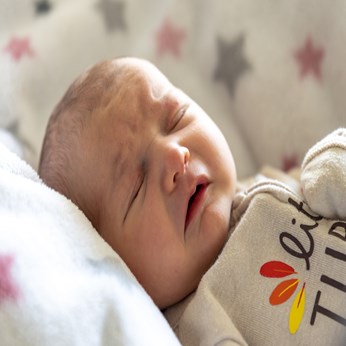Know 5 Important Things About Lovebirds
The word lovebirds could send a tingle down your heart for these small parrots from Africa and Madagascar have been so named because of their affectionate, strong, monogamous pair bonds that they form with their chosen pair. Scientifically known as Agapornis, the most common species available especially in USA is the charming peach-faced lovebird and the striking black masked, with numerous existing in areas like California, Arizona and Florida.
5 important things about lovebirds:
1) Temperament: Lovebirds are one of the smallest of parrots that possess great intelligence and are playful and affectionate birds. They form strong bonds with their owners with proper care and adequate socialization; in case you cannot spend adequate time with them it is best to get them a suitable mate for socialization and interaction. Lovebirds show an intense urge for bonding and could also bond well with even their same sex. Lovebirds temperamentally believe in giving and receiving constant assurance and acknowledgement that is visible by their constant kissing and preening habits that turns into painful nips and bites in a serious manner. Lovebirds are fairly quiet companions and ideal to live in apartments and condominiums, though they could at times get loud with vocal outbursts during times of alarm and excitement and when they chat and talk with each other. Although they do not sing, but their chirps, squeals, and chortles, make music of their own.
2) Colors of lovebirds: Lovebirds have 9 sub-species namely the Peach-Faced, Red-Faced, Madagascar, Abyssinian, Nyasa, Swindern's, Masked, Black-Cheeked, and Fischer's; peach-faced is the most common. They are of various colors like gorgeous yellow, green, and blue with a brilliant splash of peach or apricot on their heads; you could also find other color mutations.
3) Diet and nutrition: Generally lovebirds in the wild feed on grains, grass, seeds and berries; however in captivity it is best to serve lovebirds a nutritionally dense diet for optimum health. An only seed diet could shorten their life span. Proper nutrition means giving a base diet that could be a combination of cooked whole grain brown rice, legumes, barley, noodles, uncooked frozen mixed vegetables and granulated sea kemp with fresh vegetables added. Give lovebirds fruits especially apples that levels blood sugar and eliminates cholesterol; also include whole grains as cereals, toast, or crackers and Cheerios that visually attract lovebirds.

4) Exercise: Being very active birds, lovebirds should be provided with adequate space to explore, fly and climb; most lovebirds love to chew and must be provided with lot of wood and toys to exercise their jaw muscles.
5) Toys: You need to provide toys for a lovebird to chew; they are very essential to keep lovebirds active and mentally stimulated. They are very fond of playing and spend substantial time on it; you could save by buying toys from the kids’ toy section of a grocery store rather than a bird pet store. You need to be imaginative supplying toys to your lovebirds; keep a supply of toys in all shapes, colors and sizes and rotate them to sustain the lovebird’s interest.
Image Courtesy: Google
Take the next step toward your goals
Share your requirement and find the best care providers in your area
-
Looking for a caretaker’s job? Build your profile and get in touch with families in your vicinity.
-
Discover nannies, babysitters, cooks, housekeepers, pet sitters, and elder care under one roof.
-
Get all the support you need to run a successful care center.
-
Search for appropriate centers near you depending on your needs.
Care Corner Insights: Blog Library

Deep Cleaning Your House: Room-by-Room Checklist for a Thorough Clean
A sparkling clean home isn’t just about looks—it’s about health, comfort, and peace of mind. Whether you’re prepping for a festival, hosting guests, or just tired of the clutter, a deep clean can transform your space. But where do you start? Here’s a

What are Senior Apartments? Experts Explain Independent Living for Older Adults
As we age, our needs and lifestyles evolve—but one thing remains constant: the desire for independence. Senior apartments are designed precisely with this in mind, offering older adults a living arrangement that balances freedom with comfort, safety,

Baby Sleep Problems: What is Sleep Regression and How to Handle It
If you’re a parent, you know that baby sleep is one of the greatest mysteries of life. One day your little one is snoozing like an angel, and the next day they’re suddenly waking up every hour, fussing, or refusing to nap. Before you panic, there’s a

Daycare Admissions in Cary, NC for New NRI Families: Documents, Health Records, and Start Dates
Moving to a new country is exciting but also comes with many responsibilities—especially when it comes to finding the right daycare for your little one. For new NRI (Non-Resident Indian) families settling in Cary, NC, understanding the daycare

Overnight Babysitters in Bellevue, WA for Business-Travelling NRI Parents: Safety & Policies
For many NRI parents living in Bellevue, WA, frequent business trips are a reality. While traveling, one of the biggest concerns is ensuring your children are safe, cared for, and emotionally supported during overnight stays. Overnight babysitters ca

Indian Home-Style Cooks in Queens, NY: Tiffin-Style Weekly Meal Prep from Your Kitchen
Queens, NY, is home to one of the most diverse food cultures in the country, and Indian cuisine holds a special place among families looking for authentic, comforting meals. While restaurant takeout is convenient, nothing compares to the taste and nu

Baby Sleep Problems: What is Sleep Regression and How to Handle It
If you’re a parent, you know that baby sleep is one of the greatest mysteries of life. One day your little one is snoozing like an angel, and the next day they’re suddenly waking up every hour, fussing, or refusing to nap. Before you panic, there’s a

What is Validation Therapy? A New Approach to Dementia Care
Caring for loved ones with dementia is one of the most emotionally challenging journeys a family can face. Traditional methods often focus on correcting memory lapses or redirecting confused thoughts—but that can sometimes lead to frustration, stress

What is a Part-Time Nanny and Do You Need One
Parenting is a beautiful journey, but let’s be honest—it can also be exhausting! Between work deadlines, household chores, and family responsibilities, sometimes there just aren’t enough hours in a day. That’s where part-time nannies step in, offerin

Part-Time Housekeeper Hiring in Alpharetta, GA: Weekly Schedules, Pricing, and Must-Do Tasks
Keeping a home spotless while balancing work, family, and personal commitments can be overwhelming. For families and professionals in Alpharetta, GA, hiring a part-time housekeeper is one of the most practical solutions. Whether you need help once a